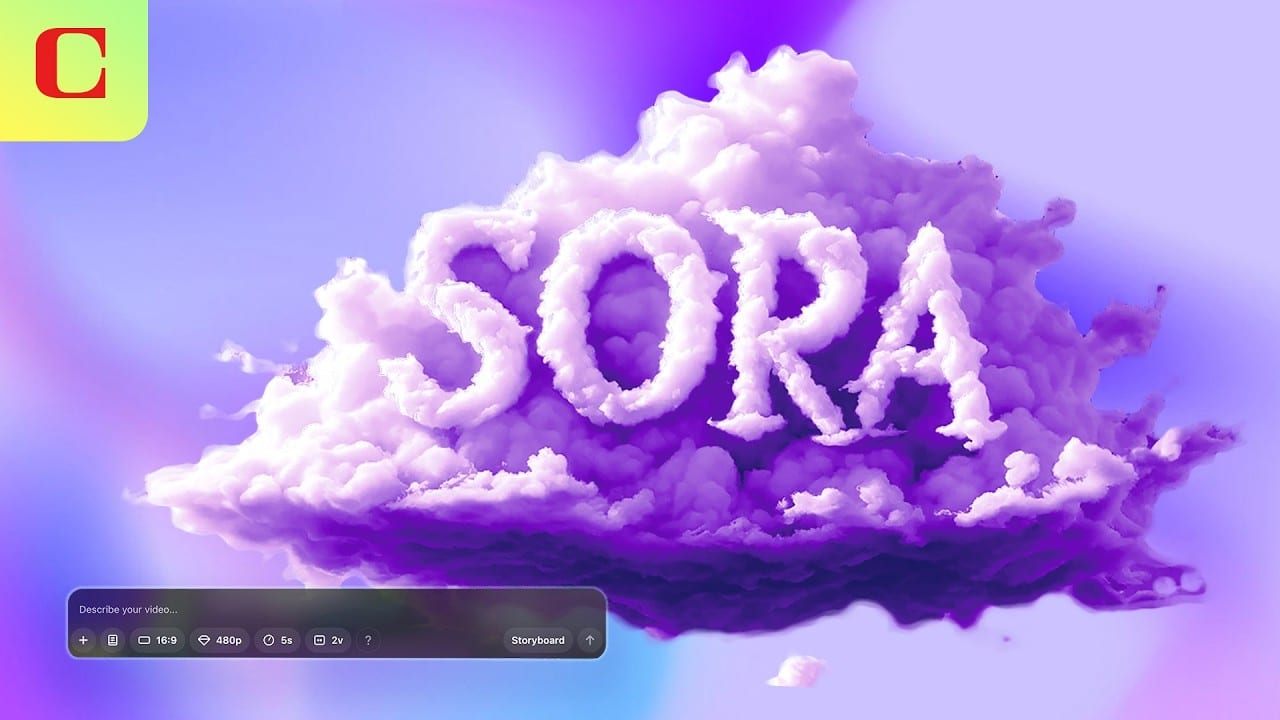Visit to watch more groundbreaking talks from the TED Fellows.
One day, humans will explore space en masse and live scattered across the solar system on planets like Mars and beyond. Inspired by his time as artist-in-residence at the European Space Agency, TED Fellow Jorge Mañes Rubio wants to rethink what we need to bring on this grand journey — and more importantly, what we should leave behind. Mañes Rubio takes us on an Earthbound journey through cultural practices and his own designs that blend science, art and ritual, encouraging a bold reimagining of what a future free of prejudice and exploitation could look like.
The TED Talks channel features the best talks and performances from the TED Conference, where the world’s leading thinkers and doers give the talk of their lives in 18 minutes (or less). Look for talks on Technology, Entertainment and Design — plus science, business, global issues, the arts and more. You’re welcome to link to or embed these videos, forward them to others and share these ideas with people you know.
Become a TED Member:
Follow TED on Twitter:
Like TED on Facebook:
Subscribe to our channel:
TED’s videos may be used for non-commercial purposes under a Creative Commons License, Attribution–Non Commercial–No Derivatives (or the CC BY – NC – ND 4.0 International) and in accordance with our TED Talks Usage Policy (). For more information on using TED for commercial purposes (e.g. employee learning, in a film or online course), please submit a Media Request at
[SHAPE YOUR FUTURE]
We are at the beginning
of a new era for the future exploration
and commercialization of space.
First it will be the Moon and from there,
Mars and the rest of the solar system.
I’ve always been fascinated
by space exploration,
but at the same time troubled
by its multiple implications.
Historically, human exploration has led
to an aggressive exploitation
of people, land and resources.
This ongoing colonization process
has shaped the unfair world
we live in today.
So how can we make sure
we stop perpetuating
the same old colonial patterns?
When I was appointed artist in residence
at the European Space Agency,
I thought it was a unique opportunity
to make a bold statement, to rethink:
as human beings, what do we really need
to take with us on this space journey?
And perhaps even more importantly,
what should we leave behind?
As a privileged white male individual
born and raised in Europe
I grew up in a world where Western arts,
science and technology
are presumed superior
over every other form of knowledge.
However, visiting many museums
and their vast collections,
products of our colonial heritage,
I was introduced to
a wide range of cultures
and unique ways to understand
the world we live in.
Humanity’s greatest achievement
was not landing on the Moon,
but our cultural diversity,
the rituals, beliefs
and knowledge woven within it.
This rich legacy
does not belong in the past
but is very much alive,
sometimes even thriving.
We rarely talk about cultural,
ethical or even spiritual matters
when discussing space exploration,
but I believe it’s precisely culture
that will give us a purpose in the future.
Through my artistic practice,
learning to appreciate
multiple cultural dimensions
without the nostalgia or condescension
that historically has been projected
upon these cultures,
their knowledge and their significance.
This is Kim Keum-Hwa,
Korea’s most iconic shaman
who passed last year.
I met Kim Keum-Hwa at her shrine
in Ganghwa Island,
where I witnessed her last ritual,
a celebration to bless
her 70th anniversary as a shaman
and to prepare her departure
to the spirit world.
Dating back to prehistoric times,
Korean shamanism has remained
a resilient form of spiritual practice
and a source of empowerment
for many women.
This is Jeong Soon-deok,
the shaman of the people,
during a ceremony
that lasted several days and nights.
I remember bowing to her,
surrounded by blades
and colorful costumes and offerings.
Everyday objects were being elevated,
acquiring a new dimension
right in front of my eyes.
I saw her becoming a god,
her body transformed
through dance, prayer and ritual.
What’s interesting is
that despite their position of power,
Korean shamans remain
graceful, humble human beings.
Through these women,
I could clearly see the power
within ancient forms of knowledge.
The role our cultures play
in maintaining a fragile cosmic balance.
This is Don Ramón,
a local healer from the Center
for Indigenous Arts in Veracruz, Mexico,
where Totonac culture
is being taught to future generations.
The center’s director,
Humberto García, was proud,
describing an educational model
where disciplines like art,
communication or medicine
are not independent
but entangled with each other.
Totonac cosmovision revolves
around this ever-changing,
interconnected dimension.
There is a natural rhythm that infuses
every activity here,
be it cooking or weaving or healing.
Nothing is trivial or decorative.
Every gesture, every action has a meaning.
These traditions, beliefs and rituals,
they’re far from being immobile.
They’re the result
of thousands of years of practice
in a painful regenerative process.
These are unique pieces of wisdom
we must definitely
bring with us into the future.
And this is what I’m doing
to make that happen.
I want to challenge our current model
of space colonization,
and I decided to start
with a big gesture —
to recognize the Moon
as a universal symbol
of rebirth and renewal.
As part of the European
Space Agency’s plans
to support a permanent
human presence on the Moon,
I’m proposing to build the Moon Temple,
a future space for diverse
cultural projections,
traditions and scientific research.
The Moon Temple will stand
on the rim of the Shackleton crater,
a gigantic impact crater featuring peaks
of eternal light and perpetual darkness.
Its design takes advantage
of lunar microgravity,
the use of local resources
and the complex celestial mechanics
that operate
on the south pole of the moon.
Sheltered in its interior,
we can find traces from an intriguing
new material culture,
a series of objects made with moon dust
and rare aerospace materials,
symbolizing humanity’s ancestral wisdom
and all its complexity.
These masks, vessels
and other ritual artifacts,
they’re powerful objects
that imply deep personal transformations,
sometimes even becoming
a bridge to distant worlds.
They represent the vast diversity
embedded in the human experience.
These objects carry within them
thousands of stories yet to be written.
Some provide protection,
while others relate
to the harsh conditions
that people will endure
outside our planet.
But even if these objects come
from a place far away from here,
we can still recognise
a familiar human quality within them.
The Moon Temple celebrates the Moon
as the measure of all things.
It is a monument to humanity’s
reason and imagination.
It represents our chance
to bring together once again
science, art and ritual.
This may be a personal,
even utopian vision
for our interplanetary future,
but perhaps through
these utopian exercises
we can break free from
many of our prejudices here on Earth,
because we need more diverse
personal narratives for our future,
a future where we don’t
turn our backs to our cultures
and the role they play
in shaping who we are today.
A future that does not perpetuate
the survival of the most privileged
at the expense of the most vulnerable,
but instead acknowledges
our fragile position in this universe
and our responsibilities towards it.

 Science & Technology5 years ago
Science & Technology5 years ago
 CNET5 years ago
CNET5 years ago
 People & Blogs3 years ago
People & Blogs3 years ago
 Wired6 years ago
Wired6 years ago
 Wired6 years ago
Wired6 years ago
 Wired6 years ago
Wired6 years ago
 Wired6 years ago
Wired6 years ago
 CNET5 years ago
CNET5 years ago

















MrPedur
July 7, 2021 at 9:57 pm
Man must take all the pollution and religions up into space and leave the money.
Bee
July 7, 2021 at 10:11 pm
Could we prioritise animals, plants trees ect before objects? Imagine colonising other worlds without the nature we have here, it’d be kinda boring 🤔
Jeff K
July 7, 2021 at 10:41 pm
Sorry Guru dude, we will be sending scientists and engineers to colonize the moon and Mars
Amber Dandapat
July 8, 2021 at 1:44 pm
yussssss
Alejandro Vasquez
July 7, 2021 at 10:56 pm
🥱💤
DrBeeSpeaks
July 7, 2021 at 11:49 pm
They need to leave the whole concept of racism, prejudice, and separateness behind. ❤️
Brett
July 7, 2021 at 11:53 pm
Thanks! I needed the laughs.
Jacob De La Vega
July 8, 2021 at 1:08 am
this guy could talk to me abt anything
Raman Sharif
July 8, 2021 at 1:19 am
are you a fake version of Jesus?
Blanca Medina
July 8, 2021 at 2:49 am
Take the billionaire we don’t need them
Sayan Dey
July 8, 2021 at 5:33 am
Great idea, Sir! But just curious how this is going to help from a scientific point of view.
Katmandu Carl
July 8, 2021 at 6:50 am
This is possibly the
worst TED talk ever made.
Niranjan Hanasoge
July 8, 2021 at 9:52 am
TED has an awesome sense of humor, but a very bad sense of timing. This video would’ve been perfect for April 1st!
Eva
July 8, 2021 at 11:19 am
Banksy to the Moon!
English Explorer
July 8, 2021 at 11:57 am
👍👍👍
World Explorer
July 8, 2021 at 11:58 am
❤️❤️👍👍👍
tyronsanderson
July 8, 2021 at 12:52 pm
I reckon leave the government’s of the earth behind and take our family. 100 % 🇦🇺
Amber Dandapat
July 8, 2021 at 1:43 pm
i don’t understand
Amber Dandapat
July 8, 2021 at 1:43 pm
ye
Amber Dandapat
July 8, 2021 at 1:43 pm
booooo
S Wallace
July 8, 2021 at 1:45 pm
The elite
Luis
July 8, 2021 at 4:20 pm
I joint your words bro
Larry mac
July 8, 2021 at 4:48 pm
Take the elite and all the politicians ….
TwO2ThAt
July 9, 2021 at 1:26 am
I rather listen to chills than Dracula’s step kid less than a minute in I’m out….
S1NB4D
July 9, 2021 at 2:42 am
Religion,politicians and people who voted for trump.
Stefan Nikola
July 9, 2021 at 2:56 am
We need to leave religion, spirituality, mythology, supernaturalism, superstition, and psychism behind. Leave them on Earth, and move on to new worlds and evolve.
Stefan Nikola
July 9, 2021 at 2:57 am
I remember when TED was about “Technology, Entertainment, and Design” instead of Wokeism, Far Leftism, and Political Correctness.
Ha Le
July 9, 2021 at 8:48 am
I just wonder, why we have to waste a lot of money to move to another planet while we can use these money to improve the Earth? So nonsense that human is destroying the place they was born then find a new one to keep doing it? I totally agree that science is so amazing when they can discover such incredible thing on earth or in universe, but doesn’t mean one day we leave this world behind and dodge our responsibility to the Earth 🙂 it is my opinion, that’s all.
紅葉maple
July 9, 2021 at 9:50 am
要約求む
Ronald Dan Caliva
July 9, 2021 at 12:32 pm
We cant take any thing up there! There’s no possible Life up there it’s zero possibility according to the scientists , most specially it is also Said in the Bible and it had been said by God already before the universe was ever made. Humans are destined to live only in earth.
SLBUM kim
July 9, 2021 at 3:04 pm
Being has a tendency to ‘return’ to clusters
=’the nature of solidarity’ -a desire for empathy -(Wave)-(yin)
and also,
Being has a tendency to ‘exist’ as individuals
=’the nature of self-expension’ -a desire for breed-(Particle)-(Yang)
Likewise, humans have two elements.
We must realize that we all have both left and right elements
=Solidarity and Self reliance
No one has only one element.
so ‘Sum’ derived from ‘two poles’ , (thesis, antithesis, synthesis)
To develop intellect and ethics by harmonizing the two,
It is good to realize it and balance it properly
But A few people polarized the crowd(political partisanship)
without balancing themselves.
And They stole only the sum, only the synthesis from the triangle composition.
Now We all have to get out of this deceptive situation.
This is not the time for us to hate each other.
We have to track down those who have been manipulating us.
Future Arc Learning Centre FALC FALC
July 9, 2021 at 6:24 pm
How about building a safe place for all homeless children in the world. A moon space where people can go to live if they have difficulties coping on earth.
Emmanuel Brown
July 10, 2021 at 3:52 am
strategy to make profit of the market as when the market goes bearish investors/ traders loses their investment which is always painful, when you can take advantage of the market by involving in day trading or copying trade alert from a professional trader that understand the market and use strategy to generate signals daily to make profit to grow your portfolio as i have been doing with Mr Greg for the past 5 weeks and i have been able to day trade to grow my initial 0.8 btc to 6.8 btc which you will rethink and see that trading is better/profitable. Mr Greg daily signals are very accurate and always yields a great positive return on investment. Mr Greg can be contacted via.. what APP+,, 1 ,, (3,, 1, 4,,) 3,, 2, 5, 6,9,, 6,, 0 on how to trade profitably———
willy956
July 10, 2021 at 1:40 pm
This video is literally bullshit
Martingoldfire
July 10, 2021 at 8:21 pm
What we will take with us, culturally, is yet to develop. Before we venture out never to return, we will have progressed into a global and intellectually evolved culture. One that looks back at our culture with disbelief, like we do when viewing the barbarism of ancient cultures. I do not believe that a temple on the Moon will be one of the steps humanity will take on our evolution through spacetime, but rather an idea destined to be lost among the other forgotten anecdotes of history.
Invox
July 10, 2021 at 8:24 pm
Do they just let anyone talk in Ted now? 😅
Nick Davis
July 11, 2021 at 2:53 am
I have never suffered through a ted talk like this. It was like listening to the typical woke white guy after his backpacking trip
Maira Thorn
July 12, 2021 at 9:18 am
*So alternative meaning of your proposal is that we need more Anthropologists to understand culture beyond our earth and interpret it to our people.*